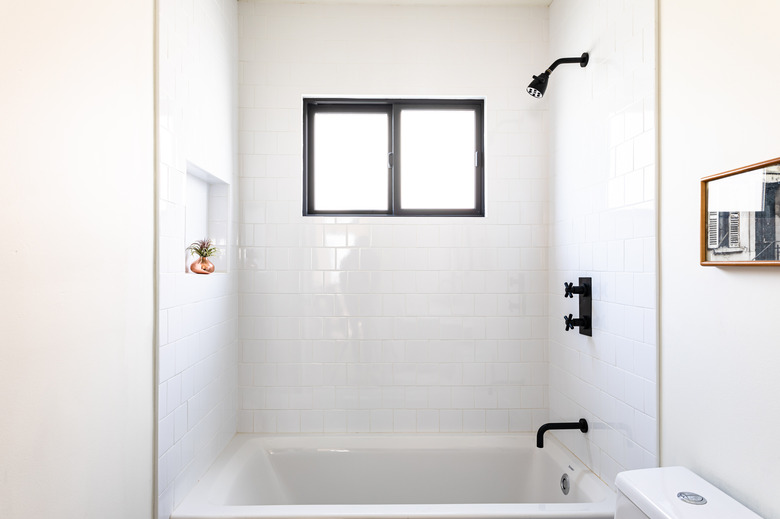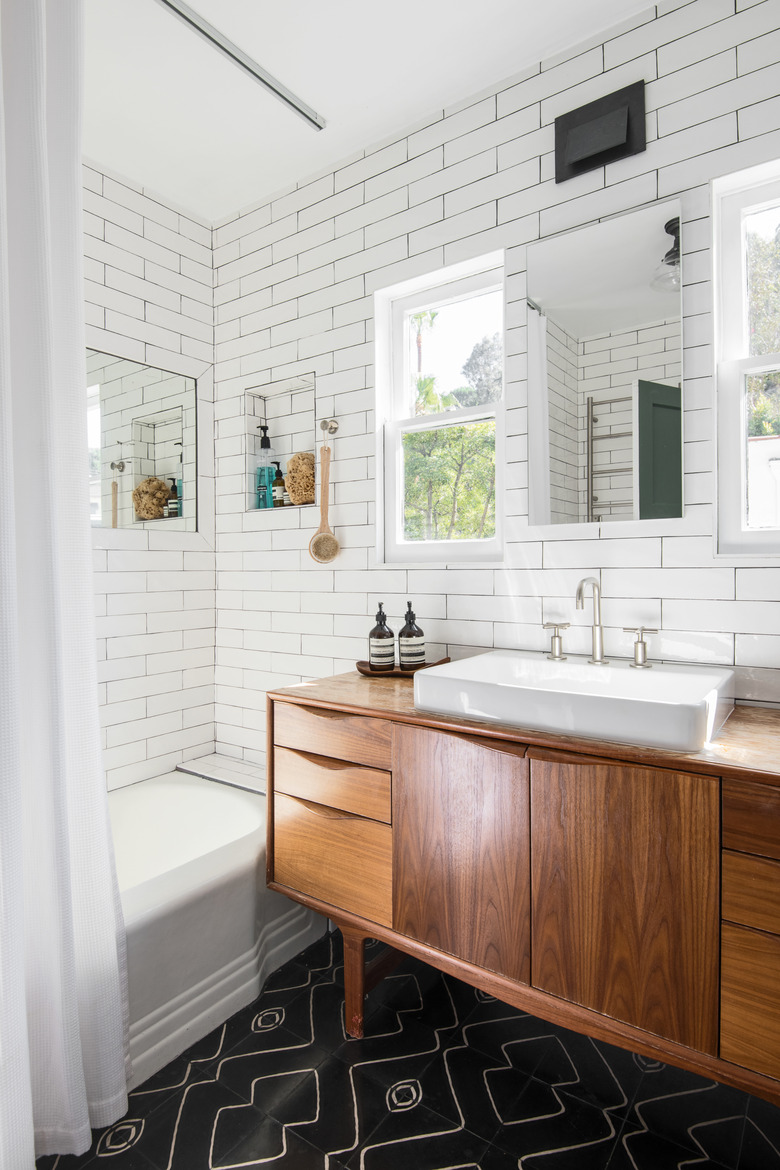Alcove Bathtubs: What You Need To Know
There are a few different ways to categorize bathtubs, and one common way of categorizing tubs is by installation method. The most common of these is the alcove bathtub. The basics of these frequently used tubs are fairly simple, but it's important to understand the characteristics of an alcove tub before purchasing one for your bathroom.
Also known as a fitted or recessed bathtub, an alcove tub is one that fits between three walls. While other tubs like drop-in and undermount tubs can also be fitted in these spaces, these tubs have no finished sides and must have a base constructed around them in order to be installed. An alcove bathtub, on the other hand, has a finished apron front that covers the exposed side of the alcove, adding support and style to the tub.
Other Common Bathtub Installation Methods
While alcove tubs are the most popular bathtub style because they work well with showers and are inexpensive, they are far from the only option. Other types of bathtub installation methods include:
- Corner: These are
very similar to alcove baths only they are designed to fit in a
corner. As such, the back two sides are unfinished, and the front side has an apron. The front may feature two sides connected with a 90-degree angle
like a traditional tub, a wide curve or three sides with two 135-degree corners.
These are often used in bathrooms that have too little space for a traditional
tub and are often shaped differently than standard tubs, so it's a good idea to
sit in these tubs before buying them to ensure you feel comfortable in them. - Freestanding:
These can be installed anywhere (not just against a wall) because they support
their own weight. They tend to take up more space than other baths and are
often very deep, making them excellent soaker tubs. The most popular models are
traditional clawfoot bathtubs that have supports under the tub. - Drop-in: Another
great option for those looking for a soaking tub, drop-ins have no finished
sides and require a frame to support the body, which features a rim that sits
above the platform. While the installation is complex and the frame can be a
bit expensive, they offer a greater level of customization than most other
styles, and the platform can also provide additional storage. - Undermount: Similar
to drop-in tubs (only there is no rim fitted above the installation area),
these offer the same style and storage benefits and are similarly more
expensive and difficult to install. Drop-in tubs can sometimes be installed in
an undermount style, but there are also undermount-specific bathtubs that can
only be installed in this manner.
Alcove Bathtub Pros and Cons
There are a lot of good reasons to choose an alcove bathtub. Some of the biggest benefits include:
- Cost-effectiveness: The
popularity, ease of installation and all-in-one nature of alcove bathtubs mean
that these tubs are some of the most affordable tubs around. In fact, Fixr
says that a standard-size acrylic alcove tub will average around only $350
with prices usually ranging between $250 and $500. - Works well with showers: Because these tubs install within an alcove, they are ideal for tub/shower combos. This requires a special shower-and-tub faucet, a shower pipe, a showerhead and a shower curtain or doors.
- Standard sizing:
Many bathrooms are designed specifically for alcove installation and have three
walls set up with the exact dimensions of a standard alcove tub, which Nimvo
says is 60 inches long and 30 inches wide. This also means that it's easy to
get a standard, off-the-shelf model rather than looking for
a specialty or custom product. Most bathtub manufacturers sell standard alcove
tubs, including Kohler, American Standard, Americast and Toto. - Safety: While it
is possible to buy relatively deep alcove soaking tubs, the majority of alcove tubs have low sides and shallow depth, meaning they are safer for young children
and the mobility impaired. Because they are surrounded by three walls, it is also easy to
make them ADA compliant with the addition of handrails and a slip-resistant coating.
While there are many upsides to installing an alcove bathtub, they do have their downsides as well. Some problems with these tubs include:
- Limited sizing: While
it's possible to find slightly smaller or larger alcove tubs ranging from
around 45 to 72 inches long, there are fewer sizes available than most
other types of tubs. - Smaller than most alternatives: While there is some versatility in alcove sizing, overall,
alcove tubs are smaller in length, height and depth than most other varieties.
If you want a Jacuzzi soaker tub in which you can spend hours, other styles might be
a better choice. On the upside, it is possible to get an alcove bathtub with
built-in comforts such as armrests or lumbar support. - Design versatility:
While the popularity of alcove bathtubs means that there is quite a wide array
of styles and colors available and it's possible to find designs to fit most
decor styles, the fact that these tubs must fit into an alcove and have an
integral apron on the front ultimately means that they offer less style options
than many other tubs. - Placement limitations:
While other options can often be placed anywhere in the bathroom, an alcove tub
can only be placed in, well, an alcove. - Fewer materials:
Along with the fewer overall design styles, alcove tubs are also available in
fewer materials than most other options. The majority of these tubs are sold in
an acrylic, fiberglass or enameled steel, all of which are both lightweight and affordable,
but it's also possible to get tubs in more high-quality materials such as
porcelain, stone resin and cast iron, which are all
longer lasting. Alcove tubs are not available in more luxurious materials
such as natural stone or copper.
Basic Alcove Bathtub Installation
Before buying your tub, always check to see whether you need a left-hand drain or a right-hand drain. Standard alcove tubs will always have the drain in the same position from the walls, but because alcove tubs can only be installed in one configuration, it's critical that you buy a left-drain or right-drain tub according to the faucet and drain location in your bathroom.
Once you have the tub, alcove installation is usually fairly straightforward. The tub should be put in the alcove and leveled and then the studs should be marked with a pencil where the side of the tub lines up against them. Next, the tub needs to be removed and fitted with the drain and overflow drain components, and wooden stringers are installed just below the line marked on the studs.
Two inches of mortar should be laid down to support the tub before the tub is positioned in the mortar with the rim leveled on the stringers. Finally, the tile flange should be nailed to the studs to secure the tub in place, and the mortar should be left to dry.
References
- Compact Appliance: How to Buy a Bathtub
- Signature Hardware: How To Install An Alcove Tub
- Nimvo: The Characteristics That Define a Standard Alcove Bathtub
- Badeloft: What is an Alcove Tub: 2020 Beginners Guide to Alcove Tubs
- The Best Flushing Toilet: 5 Best Alcove Bath Tubs – Which One Should You Get?
- Fixr: Freestanding vs. Built-in Tub

